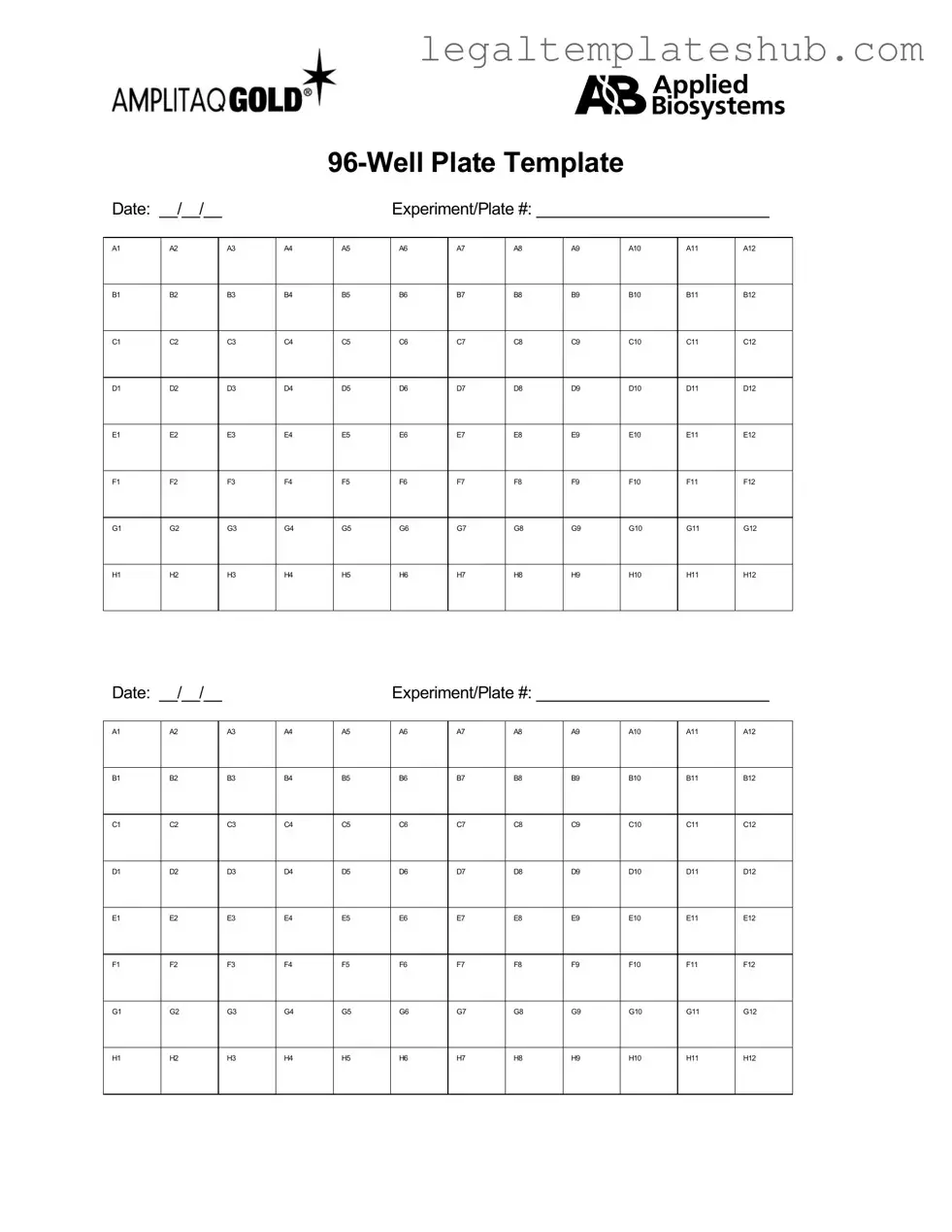Blank 96 Well PDF Form
The 96 Well form is a standardized document used primarily in laboratory settings to organize and record data from experiments conducted in 96-well plates. This form facilitates efficient data collection and analysis, ensuring that results are easily accessible and interpretable. To streamline your research process, consider filling out the form by clicking the button below.
Access Editor
